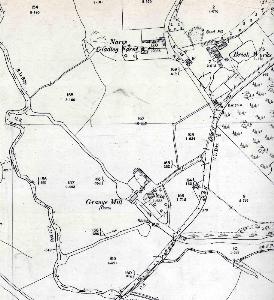Nares Gladley Farm Heath and Reach

Grange Mill and Nares Gladley Farm on 1927 valuation map
Gladley appears in the Domesday Book of 1086 as a manor separate from the Royal Manor of Leighton to which the rest of the hamlets of Heath and Reach then belonged. The area became known as Nares Gladley after the Middle Ages. The Manor of Heath and Reach, as it was later known, seems to have been centred on Grange Mill but in its very early history (until about 1150) also included tha area around Nares Gladley Farm.
When Heath and Reach was inclosed in 1841 Nares Gladley Farm was owned by John Mortimer. The farm comprised 63 acres 1 rood 6 poles broken down into a meadow, a pightle, a home close, a freeboard and four closes of land, none of them names, around the farm and extending east of Bragenham Lane.
Under the terms of the Rating and Valuation Act 1925 every piece of land and building in the country was assessed to determine the rates to be paid on them. Heath and Reach was assessed in 1927 and the valuer visiting Nares Gladley Farm [DV1/H31/28] noted that it was owned by T.Dancer and occupied by S.Turnbull, his son-in-law. The rent had been £90 per annum pre-war, but was now £55/10/- per annum, a special "family rate" fixed in 1918. The farm had still been 63 acres pre-war but was now just 40.
The valuer commented: "Buildings poor chiefly disused, as partly poultry farm. House very old". The house comprised a living room, kitchen, scullery ("was brewhouse") and cellar ("1 room used as office") with four bedrooms above and a brick and tile barn immediately outside. The homestead comprised: a weather boarded and slate workshop and granary; a stable for three horses with a loft over; a cow house for six beasts; a weather boarded and tile two bay open cart shed ("bad"); two brick and slate pigsties ("used calves") and a corrugated iron henhouse. The valuer noted: "About 15 or 16 hen houses in meadows. About 1,000 fowls".
There were, in addition, egg packing barns measuring 40 feet by 15 feet, 45 feet by 17 feet and 35 feet by 17 feet, a cycle shed 21 feet by 17 feet, a workshop 18 feet by 30 feet and a barn measuring 20 feet by 19 feet plus an additional 10 feet by 19 feet.